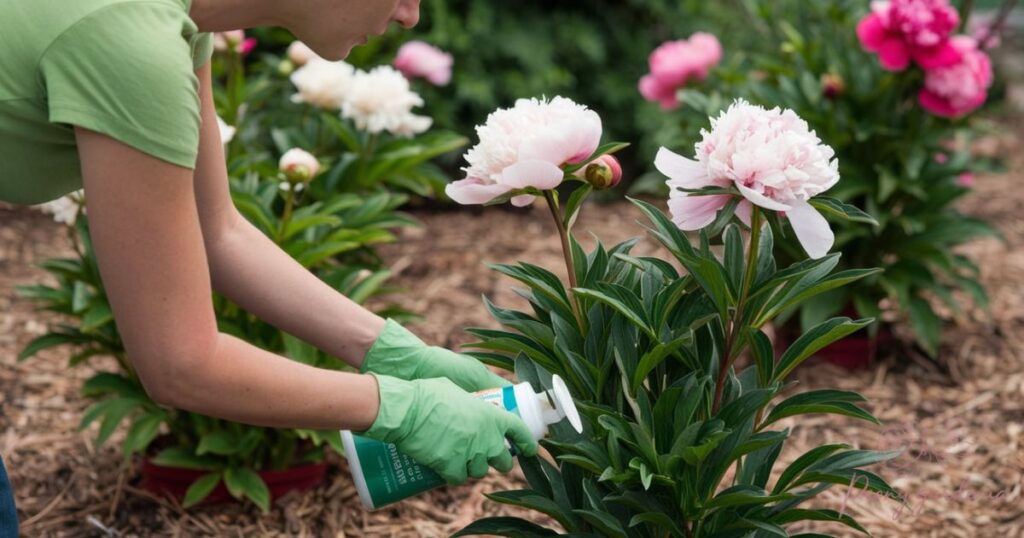Peonies are stunning perennials known for their lush, fragrant blooms and long lifespan. To keep them thriving, they need the right balance of nutrients, including nitrogen, phosphorus, and potassium. Proper fertilization ensures strong roots, healthy foliage, and abundant flowers each season. Without essential nutrients, peonies may struggle to bloom or develop weak stems.
Providing the right fertilizer at the right time can make a huge difference in your peony’s health. Whether you choose organic compost or a balanced synthetic fertilizer, maintaining proper nutrition helps prevent deficiencies and promotes vigorous growth. A well-fed peony rewards you with vibrant, long-lasting flowers.
Read More: Can I Plant Peony Near House?
Key Nutrients Peonies Need for Optimal Growth
Peonies require a mix of macronutrients and micronutrients for their best growth. The three primary macronutrients they need are nitrogen, phosphorus, and potassium. These nutrients support leaf growth, root development, and flower production, respectively. Alongside these, calcium, magnesium, and sulfur are vital for healthy cellular function and overall plant strength.
Nitrogen, phosphorus, and potassium are key to maintaining a well-balanced plant. While nitrogen promotes lush foliage, phosphorus encourages root and flower development. Potassium ensures that peonies are resistant to disease and grow sturdy stems for the blooms to thrive.
Best Fertilizers for Peonies

Choosing the right fertilizer can be a game-changer for your peonies. Organic fertilizers, like compost and manure, provide a slow-release of nutrients, ensuring long-term nourishment. These options improve the soil’s structure while enriching it naturally. On the other hand, synthetic fertilizers are fast-acting but should be used cautiously to avoid over-fertilization.
Peonies often benefit from balanced fertilizers that contain equal parts of nitrogen, phosphorus, and potassium (such as a 10-10-10 mix). Organic options like fish emulsion or bone meal are also great for providing essential nutrients without chemicals. The key is to match the fertilizer type with the plant’s needs and your gardening style.
The Role of Nitrogen in Peony Growth
Nitrogen is essential for peonies, especially during their early growth stages. It promotes the development of lush, green leaves, which are crucial for photosynthesis. Healthy foliage ensures that the plant can produce enough energy to support flower development later on. Nitrogen also boosts overall plant vitality, making it less susceptible to diseases and pests.
When applying nitrogen, it’s important to avoid excessive amounts, as this can lead to overgrowth of foliage with fewer flowers. A balanced approach, especially in spring, helps stimulate leaf production without overshadowing the plant’s blooming potential. Applying slow-release fertilizers with nitrogen ensures steady nourishment over time.
Phosphorus and Its Impact on Peony Roots
Phosphorus plays a critical role in the development of strong roots and enhances overall plant health. It helps the plant establish a strong foundation, making it more resilient to drought and other environmental stresses. Peonies with adequate phosphorus are also better at absorbing other nutrients from the soil.
A phosphorus deficiency in peonies can lead to poor root growth and smaller blooms. Symptoms include stunted plant growth and leaves that may show a purplish tint. Applying a fertilizer rich in phosphorus can help remedy this, especially in the early stages of the plant’s growth.
Potassium: Boosting Peony Flowering and Disease Resistance

Potassium is vital for improving flower production and disease resistance in peonies. It helps the plant resist stress, making it less vulnerable to pests and adverse weather conditions. Additionally, potassium supports the development of strong stems and vibrant blooms, giving peonies their characteristic lush, full appearance.
To ensure adequate potassium levels, use fertilizers that contain this nutrient, particularly in late spring when the plant starts to bloom. Peonies that receive sufficient potassium are more likely to produce larger, more beautiful flowers and are more resistant to common peony diseases like botrytis.
Micronutrients and Trace Elements for Peonies
While macronutrients are vital for peony growth, micronutrients such as magnesium, calcium, iron, and sulfur are equally important. These elements support various physiological functions, including enzyme activity, chlorophyll production, and cell structure. Without these, peonies may struggle to thrive and may exhibit symptoms of nutrient deficiencies.
Deficiencies in micronutrients can cause a range of issues, such as yellowing leaves, poor flower quality, and overall weak growth. If you notice these signs, supplement your peonies with a micronutrient-rich fertilizer or compost. Regular soil testing can also help identify any specific deficiencies in trace elements.
How to Apply Fertilizers for Peonies

The key to applying fertilizer correctly is timing and method. Apply fertilizer in early spring, just before the growing season begins, to give your peonies the nutrients they need to develop healthy stems and leaves. In the case of granular fertilizers, spread them around the base of the plant, being careful not to touch the stems directly.
Additionally, using a liquid fertilizer every 3-4 weeks during the growing season provides steady nutrition without overwhelming the plant. Avoid applying fertilizers late in the season, as this can encourage unwanted foliage growth rather than flower development.
Common Fertilizer Mistakes to Avoid
Over-fertilizing peonies can cause nutrient imbalances, resulting in excessive foliage growth and fewer flowers. Another common mistake is applying fertilizers with too much nitrogen, which can damage the plant’s root system and make it more susceptible to pests. Always follow the manufacturer’s recommendations on the fertilizer label.
It’s also essential to choose a fertilizer that suits the soil type and growth stage of the peony. Testing your soil regularly and adjusting your fertilizer approach based on the results will help maintain a healthy balance of nutrients for optimal growth and flowering.
Conclusion
Proper nutrition is essential for the healthy growth and vibrant blooms of peonies. By providing the right balance of macronutrients like nitrogen, phosphorus, and potassium, along with crucial micronutrients, you ensure that your peonies thrive.
Fertilizing at the right time and choosing the best fertilizer type whether organic or synthetic—plays a key role in promoting robust growth and preventing deficiencies. Regular care, soil testing, and avoiding common fertilizing mistakes will help your peonies flourish year after year. With the right approach, your peonies will reward you with stunning flowers and long-lasting beauty in your garden.
FAQs
How often should I fertilize my peonies?
Fertilize peonies once in early spring and possibly again in late summer.
What is the best fertilizer for peonies?
A balanced fertilizer with equal parts nitrogen, phosphorus, and potassium works well.
Can I use organic fertilizer for peonies?
Yes, organic options like compost or fish emulsion are great for peonies.
How can I tell if my peonies need more nutrients?
Look for yellowing leaves, stunted growth, or poor blooming as signs of nutrient deficiency.
Is it okay to over-fertilize peonies?
Over-fertilizing can lead to excessive foliage and fewer blooms, so apply carefully.









